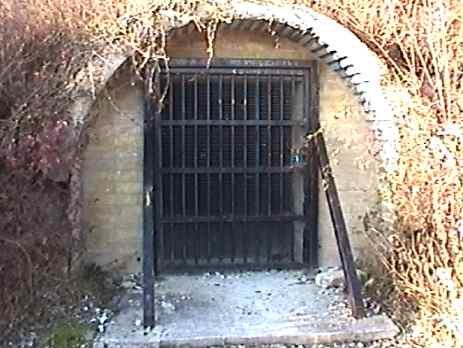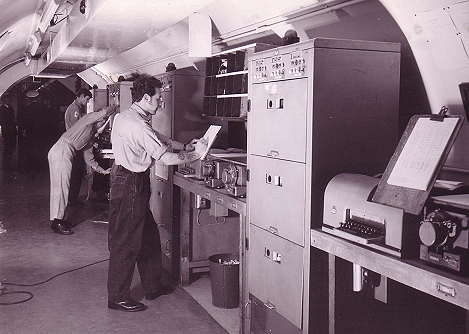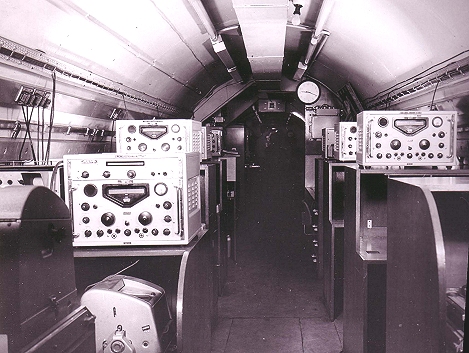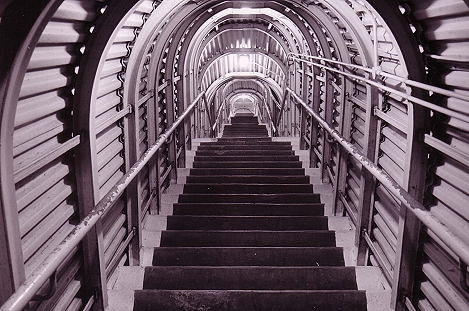|
During the cold war
era of the early 1960s the WWII
underground tunnels of Fort Southwick were re-used as a relay station for the Defence
Teleprinter Network of the NATO
Communication Organisation. Although a secret installation, the NATO
flag could be seen flying from Fort Southwick during this occupation.
It received multi addressed messages from the
Admiralty at Whitehall and NATO HQ in Europe, and split and relayed the messages to various
Naval authorities as necessary. Rows of teleprinters chattered away day and night,
and punched tape hung everywhere. Each teleprinter machine had a print head attached to it through which the
punched tape was fed. The head read the tape and operated the machine, although it could be over-ridden by the normal
keyboard. Each machine had several strips of tape hanging from bull-dog clips awaiting
feeding into the machine as soon as the previous message had gone through the head, and operators
wandered up and down the rows of machines, armed with a clipboard and wearing tapes around their necks, feeding the
machines, logging and retrieving sent tapes, and filing them away. Others would be intercepting inward message tapes, reading the multi-addressed heads, and redistributing the tapes with
individual addresses added, to the appropriate machine for onward transmission.
Each shift at the Commcen was manned by a couple of MoD civil servants and
half a dozen matelotes and it operated around the clock.
Interestingly a former escape tunnel
was used as an entrance by the staff to avoid having to tread the 149 steps from the main entrance inside the Fort, and this was manned at shift
changeover by the MoD
Police.
|




